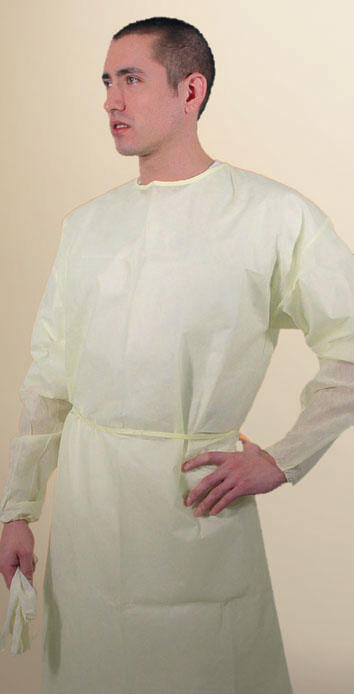
Iatrophobia, the fear of doctors, most usually leads to "white coat hypertension," a condition marked by significantly elevated blood pressure when taken at the doctor's office but normal reading of blood pressure when monitored at home or anywhere else but the physician's clinic. This reaction was thought as related to anxiety and nervousness in the presence of someone in the medical profession wearing a white coat, thus leading to unconscious fear and causing the blood pressure to shoot up. A patient fears his doctor and associates this fear with his doctor's clothes.
Then, previously only allowed in pediatric wards to drive off children's iatrophobia, pastel-colored medical uniforms are gradually being used in hospitals and clinics, influencing fashion trends in the medical community. Medical uniform designers and manufacturers began to produce clothing specifically for doctors and for nurses, healthcare professionals'' male and female wear. Tweaking a bit the formality of the white uniform clothing has been beneficial to healthcare personnel as well, involving factors such as style, practicality, comfort, fit, affordability, preference, and hygiene. The basics remain, though- the coats, scrubs, and gowns plus shoes, caps, and masks. Medical wear (and professional healthcare fashion) has now become an important sector of the medical supplies industry.
FURTHER READING
J Laryngol Otol. 2010 Sep;124(9):963-6. Epub 2010 Jun 2.
Patients'' Perceptions of Doctors' Clothing: Should We Really Be ''Bare Below the Elbow''?
Bond L, Clamp PJ, Gray K, Van Dam V. Department of Otolaryngology, Royal United Hospital Bath NHS Trust, UK. drlaurabond@yahoo.co.uk
ABSTRACT | Introduction: In September 2007, the Department of Health published Uniforms and Workwear: an Evidence Base for Guiding Local Policy. Following this, most National Health Service trusts imposed a ''bare below the elbow'' dress code policy, with clinical staff asked to remove ties, wristwatches and hand jewellery and to wear short-sleeved tops. There is currently no evidence linking dress code to the transmission of hospital-acquired infection. We designed the current survey to assess patients'' perceptions of doctors'' appearance, with specific reference to the ''bare below the elbow'' policy. Materials and Methods: A questionnaire showing photographs of a doctor in three different types of attire ('scrubs'', formal attire and ''bare below the elbow'') were used to gather responses from 80 in-patients and 80 out-patients in the ENT department. Patients were asked which outfit they felt was the most hygienic, the most professional and the easiest identification of the person as a doctor. They were also asked to indicate their overall preference. Results and Analysis: Formal attire was considered most professional and the easiest identification that the person was a doctor. Scrubs were considered most hygienic. Respondents'' overall preference was divided between scrubs and formal clothes. ''Bare below the elbow'' attire received the lowest votes in all categories. Discussion: This finding raises significant questions about the Department of Health policy in question. The authors suggest that an alternative policy should be considered, with scrubs worn for in-patient situations and formal attire during out-patient encounters. PMID: 20519044 [PubMed - in process]
womens nike shoes
 iConnectHub
iConnectHub
 Login/Register
Login/Register Supplier Login
Supplier Login


























